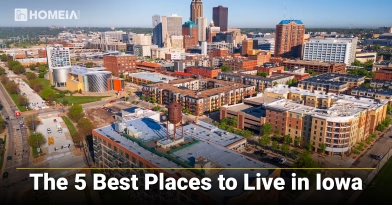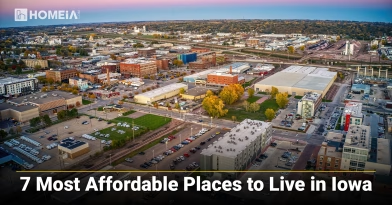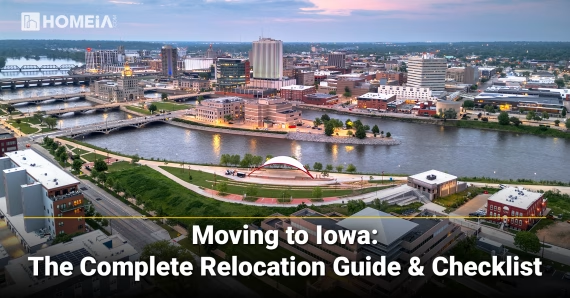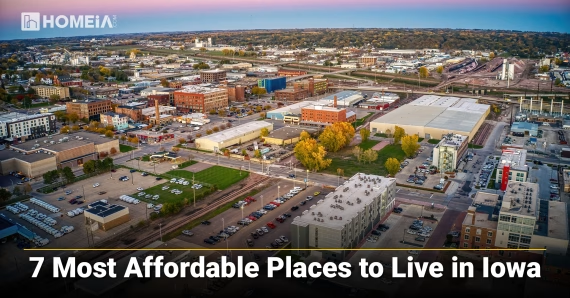The Pros and Cons of Living in Iowa
- Local Editor:Local Editor: The HOMEiA Team
Published: Nov 13, 2025
- Category: City Living Guide
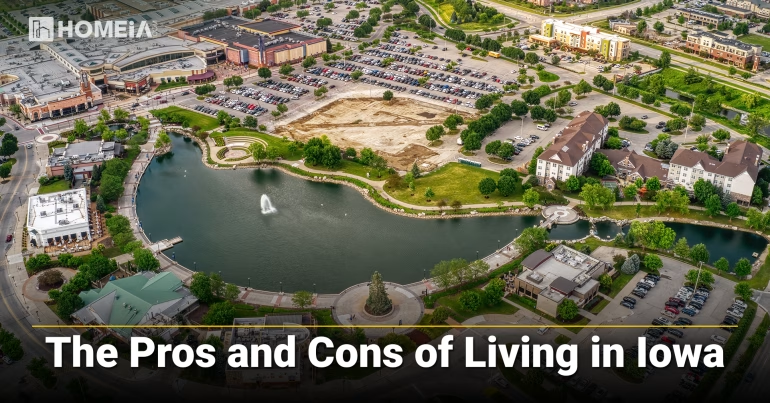
When picturing Iowa, what comes to mind are vast cornfields, rolling hills, and an established agricultural heritage. But the Hawkeye State offers more than what you see on a farm; here lies a place where strong communities, affordable living, and Midwestern values define everyday life. Yet, moving there comes with significant trade-offs, from harsh winters to limited entertainment options and an economy heavily dependent on agriculture. This guide provides a balanced, comprehensive analysis of the pros and cons of living in Iowa while offering detailed insights into the best cities for young professionals, families, and retirees. For those considering other unique states, you might explore the pros and cons of living in Utah.
Table of Contents:
- Key Takeaways
- I. Methodology: How We Evaluated Iowa
- Pros: Why Choose Iowa? Top Benefits
- Cons: Iowa Living Challenges — What to Know
- Best Iowa Cities for Young Professionals
- Best Iowa Communities for Families with Young Kids
- Best Places to Retire in Iowa
- Iowa Lifestyle: Arts, Food, and Recreation
- Frequently Asked Questions About Living in Iowa
Key Takeaways
- Affordable Living: Iowa boasts one of the lowest costs of living in the United States, with housing costs significantly below the national average, making it one of the most affordable states to buy a house.
- Strong Education System: Consistently ranks among the top states for education quality, with excellent public schools and respected universities including the University of Iowa and Iowa State University.
- Economic Stability: Features a diverse economy with rich agricultural, manufacturing, insurance, and renewable energy sectors, though job opportunities can be limited outside major industries.
- Harsh Winters: Experiences cold, snowy winters that can be challenging for those unaccustomed to severe weather conditions, with temperatures often dropping below freezing for extended periods.
- Limited Entertainment: While major cities offer cultural amenities, rural areas and smaller towns may have fewer entertainment options, dining choices, and cultural attractions compared to coastal states.
I. Methodology: How We Evaluated Iowa
Our analysis is based on a multi-factor review of key elements that impact residents’ quality of life and financial well-being. We compiled data from reputable 2025 sources, including the U.S. Census Bureau, Bureau of Labor Statistics, Zillow housing market reports, FBI crime statistics, and state agencies.
Our evaluation criteria are weighted as follows:
- Cost of Living (25%): This foundational metric analyzes day-to-day expenses defining a household budget, including the cost of groceries, utilities, transportation, and healthcare, all benchmarked against national and regional averages to gauge true purchasing power.
- Economic Health & Opportunity (25%): Long-term stability is non-negotiable. Criteria assesses the robustness of the local economy by examining median household income, unemployment trends, and the diversity of key industries to ensure a community is resilient, growing, and full of potential for its residents.
- Housing & Affordability (20%): The most significant financial decision for most. We delve beyond median home prices and rental costs to use crucial ratios like home-price-to-income and income-to-rent—providing a clear picture of how housing costs align with local earnings.
- Quality of Life & Community (20%): Affordability means little without well-being. This metric evaluates the essential factors that contribute to daily life, including access to unique cultural amenities, outdoor recreation, climate, public safety, and the strength of community engagement.
- Access & Infrastructure (10%): A community’s potential is tied to its connections. This evaluates critical modern infrastructure, including reliable high-speed internet, healthcare access, transportation links, and proximity to major employers and commercial centers.
Our Methodologies to create HOMEiA Score Ratings for Each Group of Content
HOMEiA uses a consistent, data-driven methodology to evaluate U.S. states for livability, affordability, and long-term value. Our analysis centers on key factors such as Housing and Affordability, Cost of Daily Living, Access and Infrastructure, Community Strength, Safety and Quality of Life, Economic Resilience and Job Market Performance…
Pros: Why Choose Iowa? Top Benefits
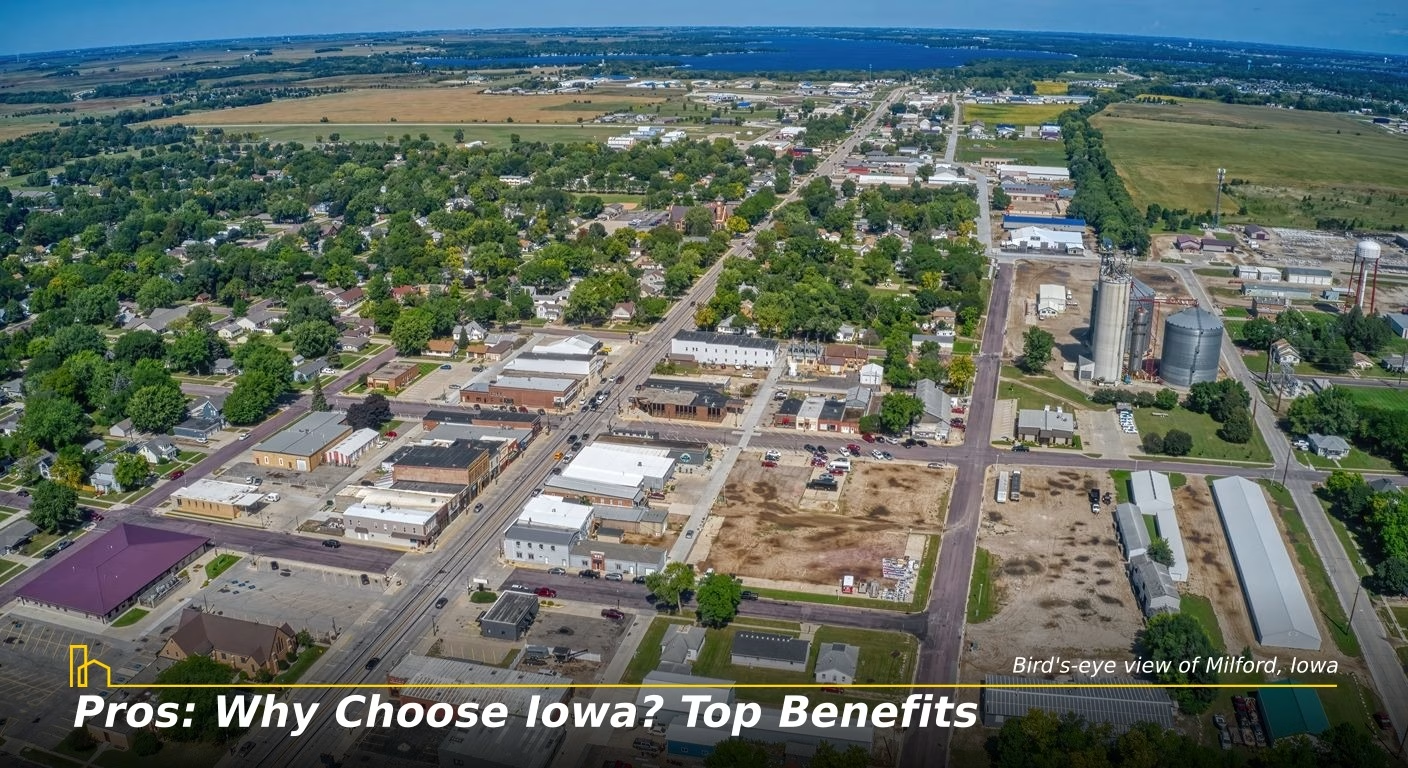
A. Unmatched Affordability and Low Cost of Living: Iowa’s greatest advantage is its unmistakable affordability. Overall cost of living typically runs about 20% below the national average, driven by some of the most accessible housing markets in the country. It means Iowans enjoy a high quality of life without the financial pressure found in many other states. For those seeking even more budget-friendly options, consider exploring the most affordable places to live in Iowa.
B. Strong Education System and Academic Excellence: IA consistently ranks among the highest states for education quality, with public schools that outperform national averages in reading and math proficiency. Being home to respected universities including the University of Iowa (U of I), Iowa State University (ISU), and the University of Northern Iowa (UNI), providing exceptional higher education opportunities and contributing to a well-educated workforce.
C. Safe Communities and Low Crime Rates: Many communities boast crime rates significantly below national averages, creating safe environments for families and individuals alike. Their emphasis on community policing and strong neighborhood bonds contributes to this sense of security, making it an attractive destination for those prioritizing safety.
D. Strong Economy and Employment Opportunities: Here features a diverse economy with strengths in agriculture, manufacturing, insurance, and renewable energy. Major employers include Principal Financial, John Deere, and Rockwell Collins, providing consistent career opportunities. Unemployment rates typically remains below the national average providing an overall sense of safety financially
E. Beautiful Natural Landscapes and Outdoor Recreation: Beyond the cornfields, it plays home to stunning natural beauty with rolling hills, scenic river valleys, and extensive park systems. Outdoor enthusiasts enjoy hiking, biking, fishing, and boating across the numerous state parks and recreational areas, providing year-round opportunities for nature appreciation.
Moving to Iowa: The Complete Relocation Guide & Checklist
Bordered by six states, Iowa combines rolling plains, vibrant cities, and a strong sense of community. Home to 3.2 million people, it offers affordable living, great schools, and steady employment. This guide provides key relocation insights, from costs and climate to the benefits of settling in the welcoming Hawkeye State.
Cons: Iowa Living Challenges — What to Know
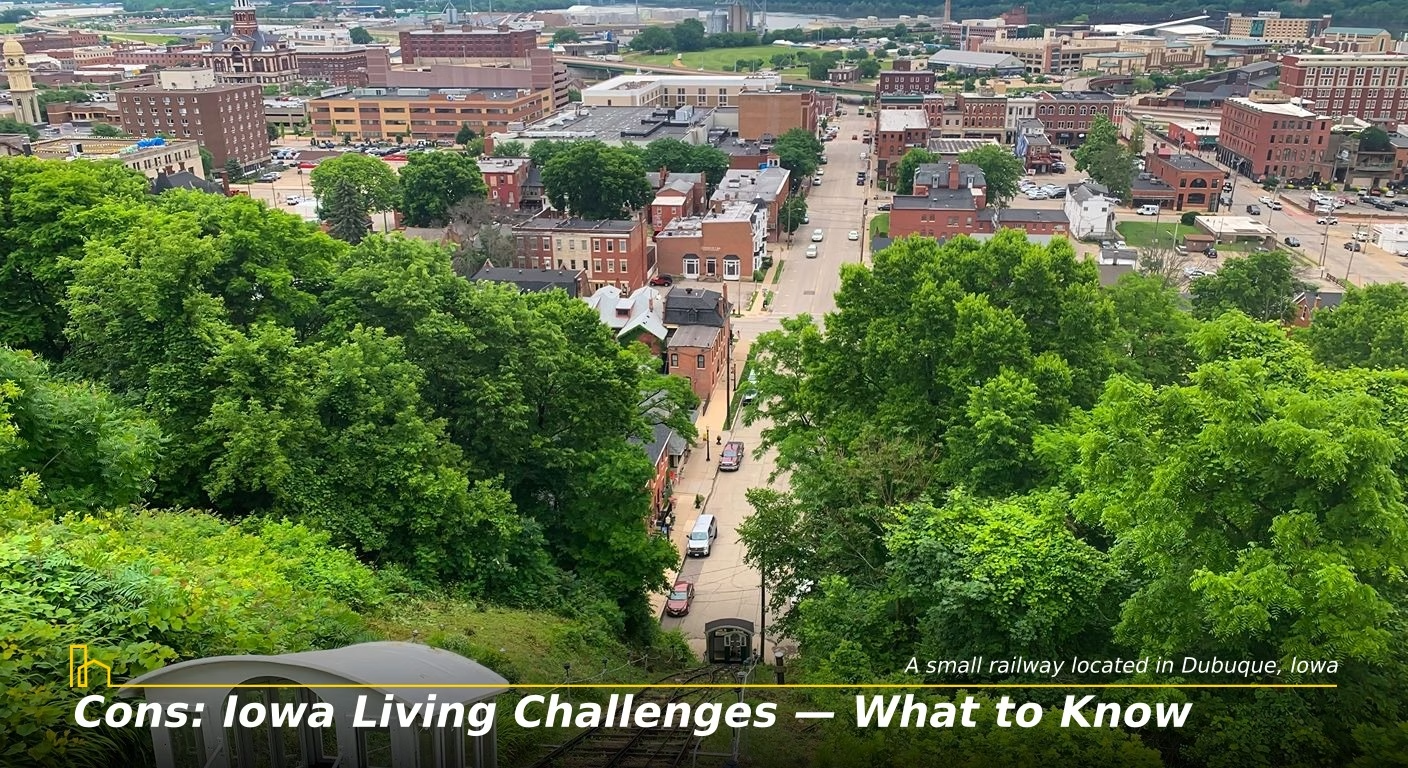
A. Harsh Winters and Extreme Weather: Residents experience unforgiving winter conditions with heavy snowfall, ice storms, and temperatures that can drop well below 0°F. Locals also face severe weather risks including tornadoes during spring and summer months, requiring preparation for weather emergencies throughout the year.
B. Limited Cultural and Entertainment Options: While major cities including Des Moines offer cultural amenities, many smaller communities experience limited dining, entertainment, and cultural options compared to coastal states. One may need to trek to metropolis for major concerts, college athletics, or diverse culinary experiences.
C. Rural Isolation and Transportation Challenges: Outside metros, the Hawkeye State can feel isolated with limited public transportation options. Rural residents often face long commutes making it suboptimal for specialized healthcare, shopping, or entertainment, making car ownership essential.
D. Economic Dependence on Agriculture: With an ever-diversifying economy, it remains heavily dependent on agriculture, being vulnerable to commodity price fluctuations and weather-related challenges. This can create economic uncertainty in farming communities and limit job diversity in certain regions.
E. Population Decline in Rural Areas: Many rural communities face population decline as younger residents move to urban areas for education and employment opportunities. It strains local services, schools, and community infrastructure in smaller towns across the state.
Recommended for you
Best Iowa Cities for Young Professionals
1. Cedar Rapids
HOMEiA Score: 82/100
- Cost of Living: Around 20% below U.S. average
- Monthly Rent: $950
- Home price to income ratio: 3.9:1
- Income to rent ratio: 62x
- Safety rating: 68/100
As its second-largest city, Cedar Rapids offers established employment networks in manufacturing, aerospace, and food processing. Featuring a growing downtown with cultural attractions including the Cedar Rapids Museum of Art and the Paramount Theatre. Gen Z and Gen Alpha members benefit from affordable housing, a reasonable cost of living, and proximity to outdoor recreation areas along the Cedar River. A diverse economy provides stability and career growth potential across multiple industries.
2. Iowa City

HOMEiA Score: 85/100
- Cost of Living: Slightly below U.S. average (around 5-10%)
- Monthly Rent: $1,050
- Home price to income ratio: 4.8:1
- Income to rent ratio: 52x
- Safety rating: 75/100
Home to the University of Iowa, Iowa City offers a youthful, educated atmosphere with opportunities in education, healthcare, and research. The city boasts a vibrant downtown with independent bookstores, coffee shops, and cultural events driven by the academic community. Newer members of the workforce enjoy access to Big Ten sports, performing arts, and a strong network of educated peers. The presence of the U of I creates a dynamic environment for career development and networking, making it an attractive option for those in academic and research fields.
3. Des Moines
HOMEiA Score: 88/100
- Cost of Living: Approximately 20% below U.S. average
- Monthly Rent: Around $1,100
- Home price to income ratio: 4.2:1
- Income to rent ratio: Approximately 58x
- Safety rating: 72/100
As the capital and largest city, Des Moines serves as the state’s economic hub, offering the most diverse job market with opportunities in insurance, finance, healthcare, and tech. Recent college graduates benefit from a vibrant downtown scene with breweries, restaurants, and cultural attractions including the Des Moines Art Center and Pappajohn Sculpture Park. The city hosts minor league sports teams including the Iowa Cubs (baseball), Iowa Wolves (basketball) and Iowa Wild (hockey), providing entertainment options. With reasonable housing costs and a strong network of young professionals, Des Moines offers an ideal balance of career opportunity and quality of life.
The 5 Best Places to Live in Iowa: A City Comparison
Iowa blends small-town warmth with modern opportunity, offering both agricultural roots and urban sophistication. This guide highlights the five best Iowa cities to live in 2025, based on affordability, opportunity, safety, and quality of life—from bustling Des Moines to scholarly Iowa City—helping you find your perfect Midwestern home.
Best Iowa Communities for Families with Young Kids
1. Johnston
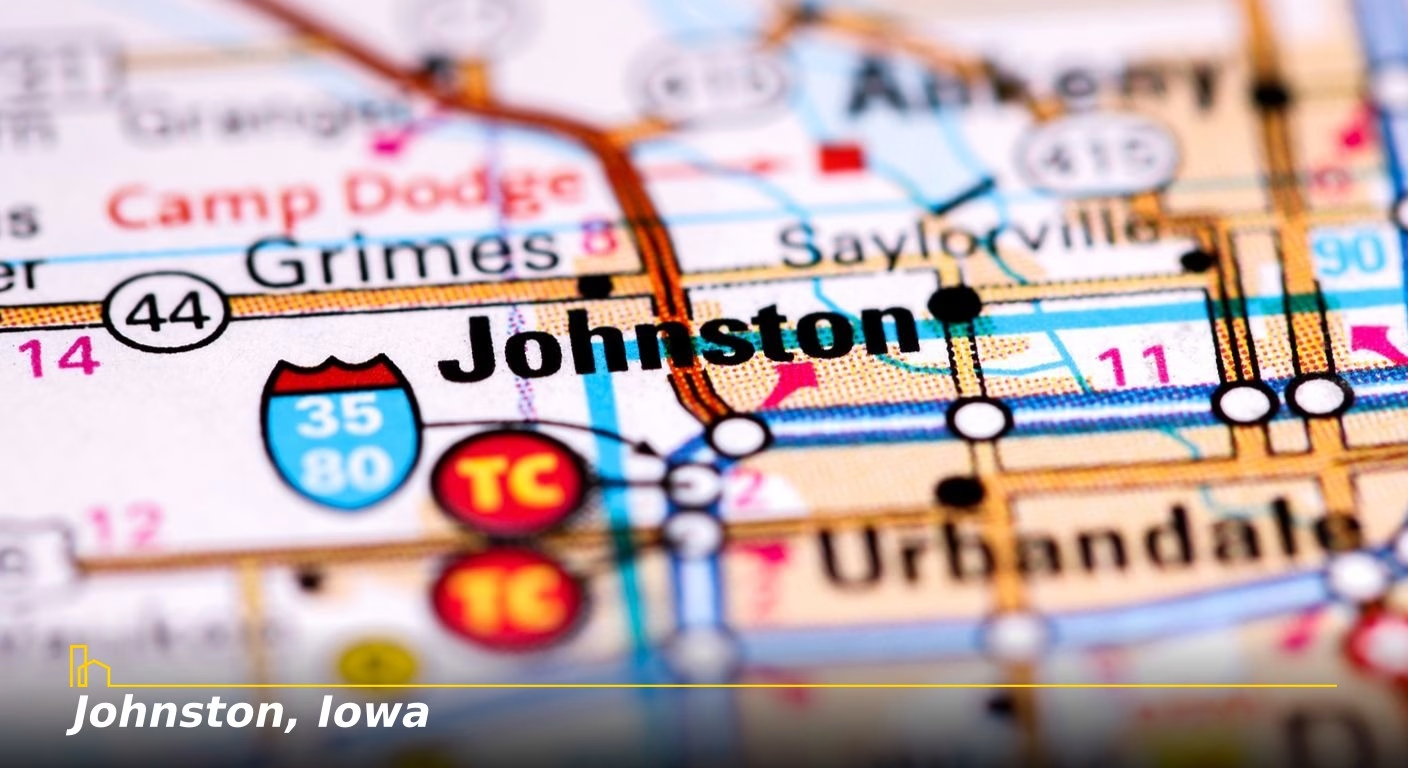
HOMEiA Score: 85/100
- Cost of Living: About 15% below U.S. average
- Monthly Rent: $1,300
- Home price to income ratio: 4.3:1
- Income to rent ratio: 49x
- Safety rating: 80/100
Known for its high-performing school system and family-friendly atmosphere, Johnston offers a high quality of life with strong community engagement. It features well-maintained parks, recreational programs, and community events that foster neighborhood connections. While housing costs are slightly higher than some suburbs, the investment in education and community services provides excellent value for families prioritizing their children’s development.
2. Ankeny
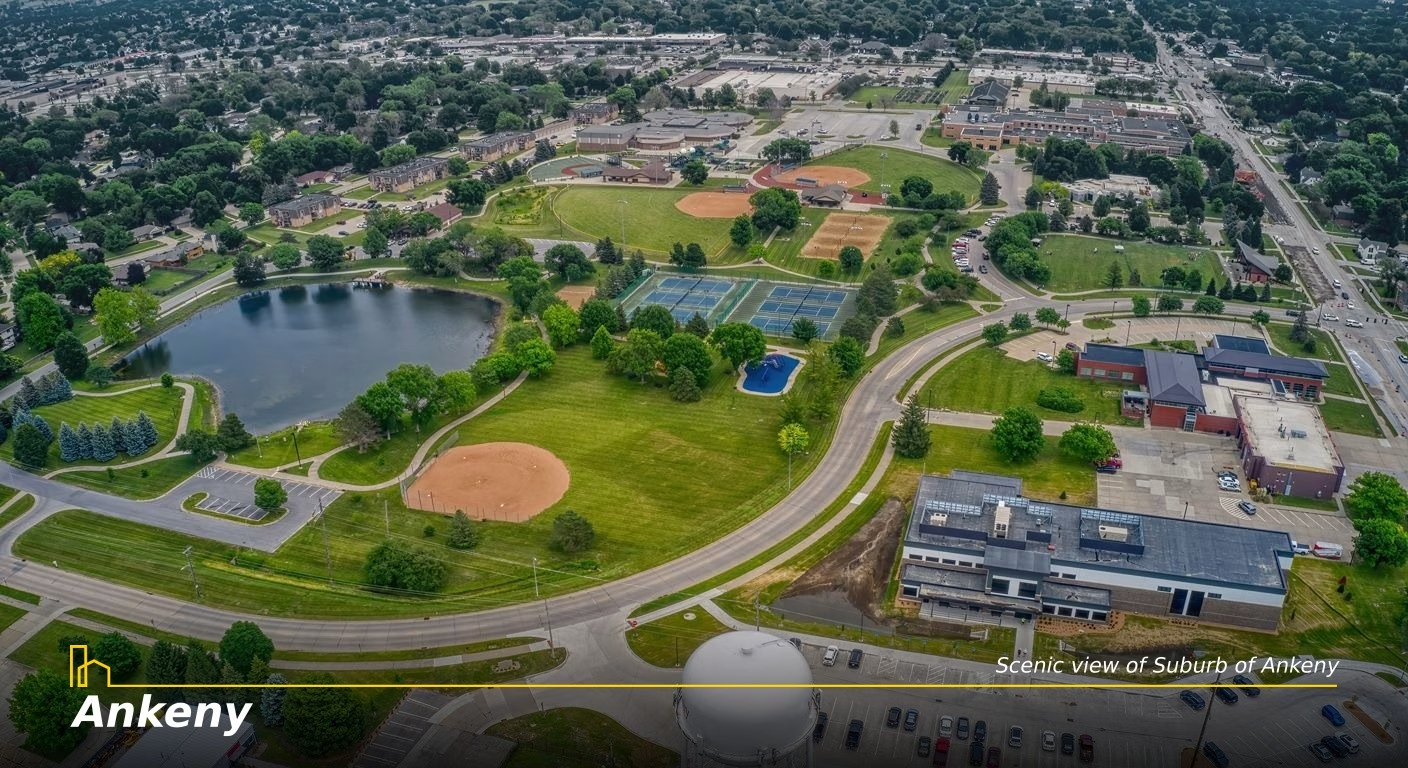
HOMEiA Score: 87/100
- Cost of Living: Around 15% below U.S. average
- Monthly Rent: $1,150
- Home price to income ratio: 3.8:1
- Income to rent ratio: 56x
- Safety rating: 78/100
As one of Iowa’s fastest-growing suburbs, Ankeny combines new housing developments with established neighborhoods, offering excellent schools and community amenities. Families can access parks, trails, and recreational facilities while benefiting from the city’s proximity to Des Moines employment centers. The community’s focus on family-oriented programming and safe environments makes it particularly attractive for those with young children.
3. West Des Moines
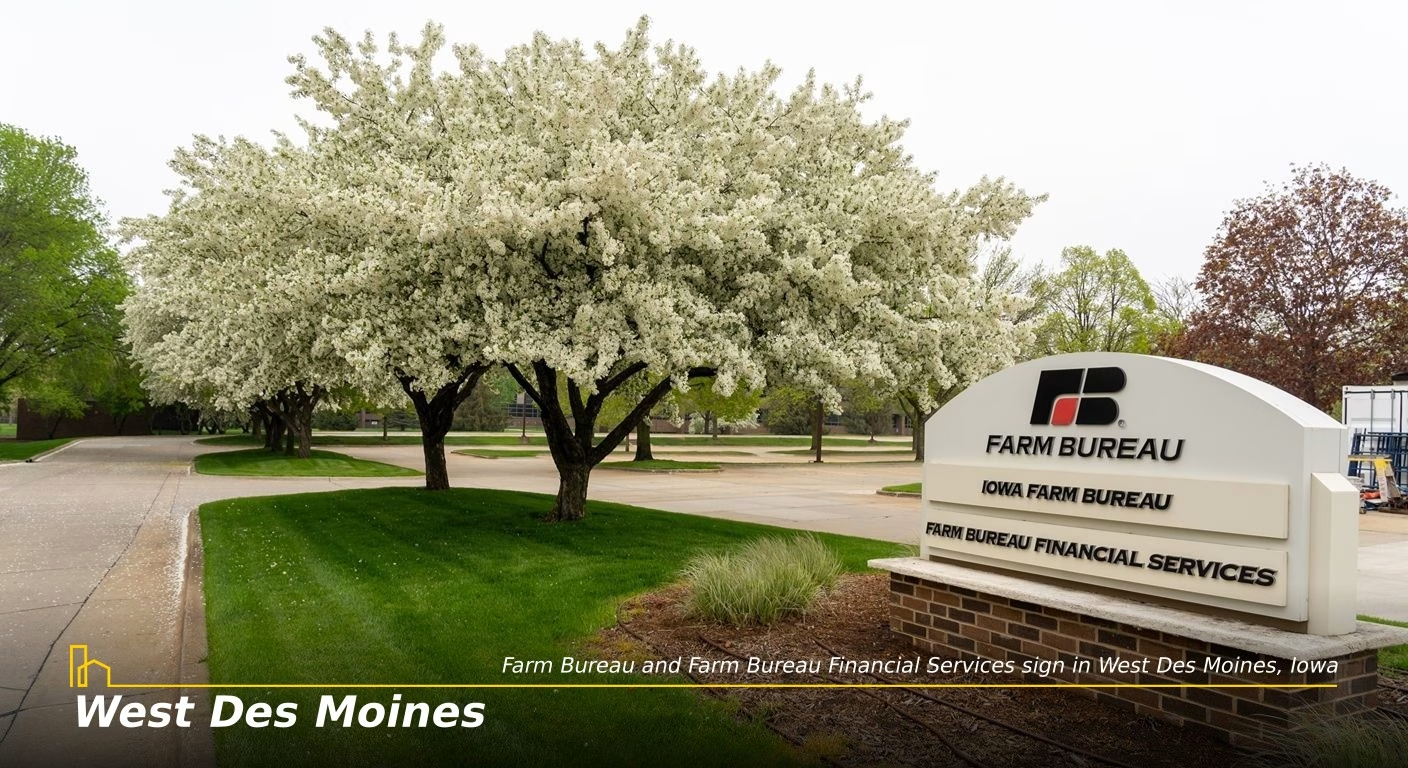
HOMEiA Score: 90/100
- Cost of Living: Approximately 15-20% below U.S. average
- Monthly Rent: $1,250
- Home price to income ratio: 4.1:1
- Income to rent ratio: 51x
- Safety rating: 82/100
Located adjacent to Des Moines, West Des Moines offers standout primary and secondary schooling, safe neighborhoods, and family-friendly amenities including Jordan Creek Town Center and numerous parks. Families benefit from community centers and recreational programs while maintaining easy access to employment opportunities in the metro area. The city’s strong economic base and commitment to community services make it a premier choice for families seeking both opportunity and quality of life.
7 Most Affordable Places to Live in Iowa (updated)
Iowa offers more than farmland and friendly faces—it’s one of the most affordable states to call home. With low housing costs and a stable economy, it’s ideal for families, retirees, and remote workers. This guide highlights seven budget-friendly Iowa communities for 2025, balancing cost, comfort, and Midwestern charm.
Best Places to Retire in Iowa
1. Coralville
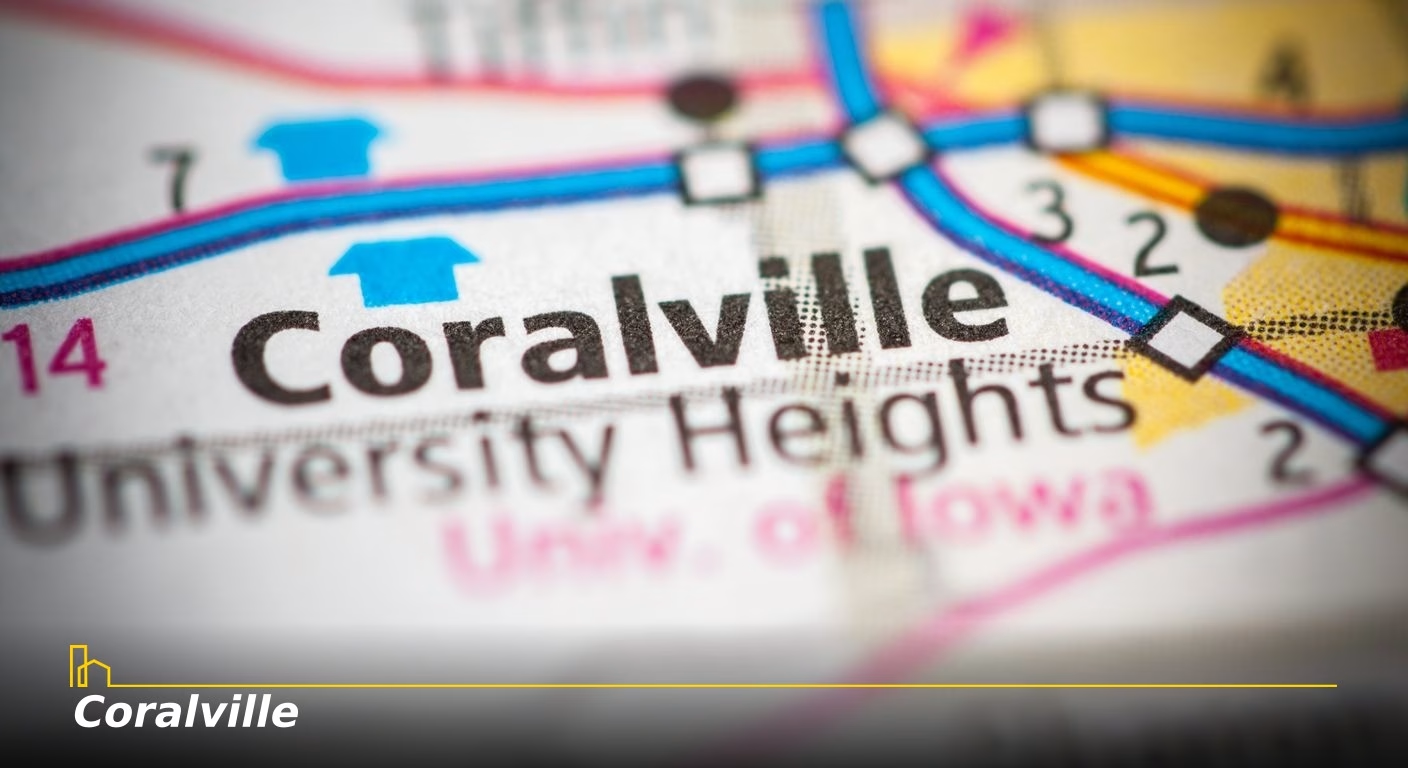
HOMEiA Score: 79/100
- Cost of Living: About 15% below U.S. average
- Monthly Rent: $1,000
- Home price to income ratio: 4.2:1
- Income to rent ratio: 53x
- Safety rating: 72/100
Adjacent to Iowa City, Coralville offers access to University of Iowa healthcare facilities and cultural opportunities while maintaining its own identity. Retirees benefit from proximity to medical services, shopping at Coral Ridge Mall, and cultural events without the student-dominated atmosphere of the university community. A prime location provides the perfect balance of access to amenities and peaceful residential living.
2. Pella
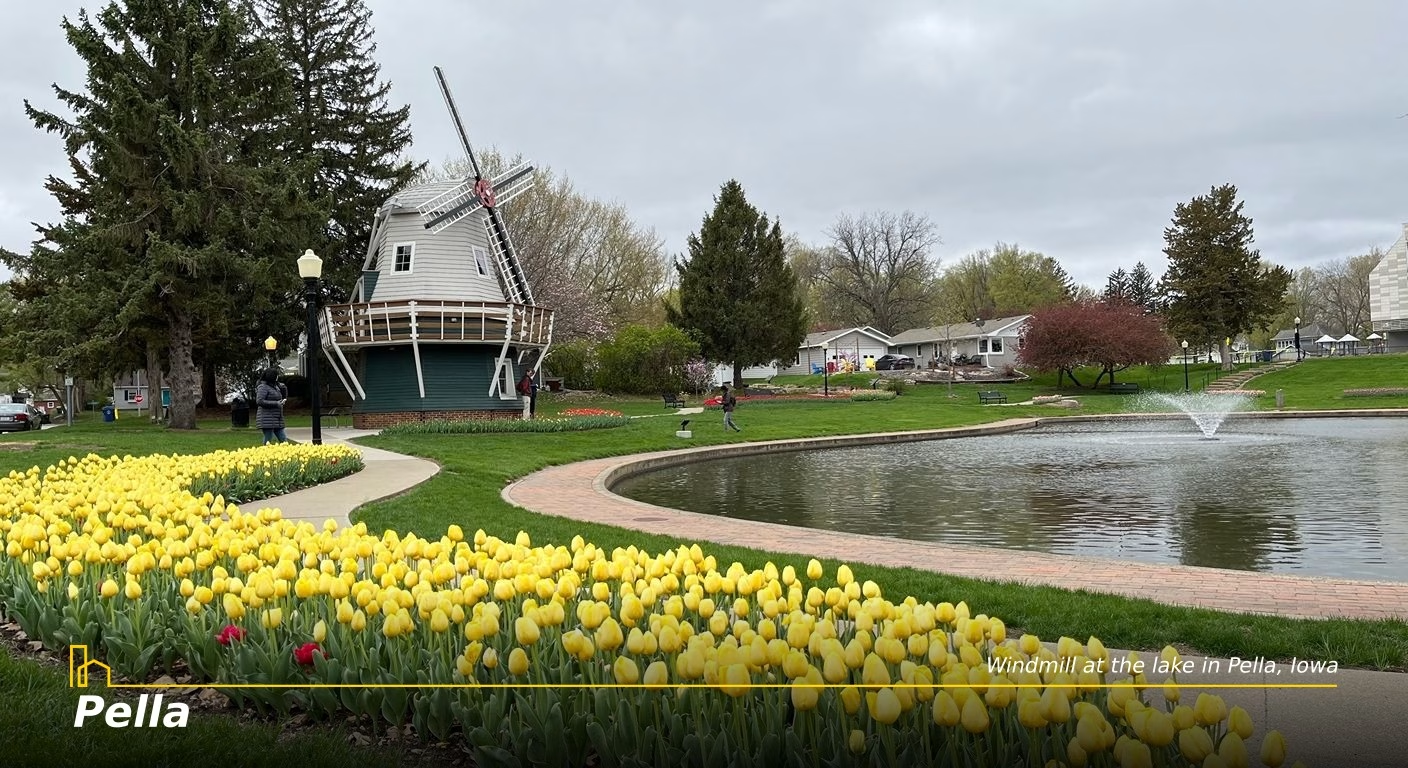
HOMEiA Score: 81/100
- Cost of Living: Approximately 10-15% below U.S. average
- Monthly Rent: $900
- Home price to income ratio: 4.0:1
- Income to rent ratio: 60x
- Safety rating: 75/100
With a quintessential Dutch heritage and well-maintained community, Pella offers a safe, clean environment with strong community values. Retirees appreciate the town’s walkable downtown, annual Tulip Time festival, and access to healthcare services. The community’s emphasis on preservation and quality of life creates an inviting atmosphere for those seeking a peaceful retirement in a town with character and charm.
3. Dubuque
HOMEiA Score: 83/100
- Cost of Living: Around 15-20% below U.S. average
- Monthly Rent: $850
- Home price to income ratio: 3.5:1
- Income to rent ratio: 67x
- Safety rating: 70/100
Situated along the Mississippi River, Dubuque offers stunning river views, historic architecture, and a vibrant cultural scene at an affordable cost. Retirees enjoy access to healthcare facilities, cultural attractions including the National Mississippi River Museum, and outdoor recreation along the riverfront. Their historic charm, combined with modern amenities and reasonable living costs, makes it an attractive retirement destination for those seeking beauty and practicality.
The 15 Budget Friendly Towns in Minnesota for Retirees
The cost of living in Minnesota varies by location and is highest in its large metro areas, but on the whole, it compares well to the coasts and to big cities. Each community in Minnesota has its own personality, and here we will introduce you to 15 of the best options for retiring in the North Star State…
Iowa Lifestyle: Arts, Food, and Recreation

A. Arts and Culture: Their cultural scene reflects its agricultural heritage and Midwestern values while embracing contemporary arts. Cities including Des Moines and Iowa City boast impressive museums, performing arts centers, and galleries. The state hosts numerous festivals celebrating its heritage, from the Iowa State Fair to community celebrations that bring residents together throughout the year.
B. Food Scene: This cuisine celebrates its agricultural roots with farm-to-table dining, classic comfort foods, and innovative culinary scenes in larger cities. While known for pork tenderloins and sweet corn, urban areas offer diverse dining options such as ethnic cuisine and craft breweries. Farmers’ markets across the state provide fresh local produce, supporting the farm-to-table movement.
C. Outdoor Activities: Recreation is integral to Iowan life, with opportunities for hiking, biking, fishing, and boating across the state’s extensive park systems. Its river valleys, trails, and natural areas provide year-round outdoor enjoyment, while winter activities include cross-country skiing and ice fishing for those embracing the colder months.
D. Sports and Community Life: Community life often revolves around local sports, school activities, and community events. High school sports command significant attention in smaller towns, while larger cities support minor league professional teams. The integral community and neighborly connections create a welcoming atmosphere for newcomers.
Conclusion: Is Iowa Right for Your Lifestyle?
This appeal lies in its affordability, strong education system, safe communities, and genuine Midwestern hospitality. Whether you’re building a career in Des Moines, raising a family in West Des Moines, or enjoying a peaceful retirement in Dubuque, the Hawkeye State presents a compelling case if you can adapt to its climate challenges and embrace its community-focused values. Weigh the benefits of economic stability and quality of life against the limitations of entertainment options and winter weather to decide if Iowa aligns with your personal and professional goals. For those still considering their options, our guide on essential steps for moving to a new city is a great resource.
Recommended for you
Frequently Asked Questions About Living in Iowa
1. What is the cost of living in Iowa compared to other states? Cost of living is among the most affordable in the U.S., approximately 20% below the national average. This is largely driven by low housing costs, reasonable utility rates, and affordable healthcare compared to many other states.
2. How severe are Iowa’s winters? Iowans experience cold, snowy winters with temperatures often dropping below freezing and sometimes well below zero Fahrenheit. Snowfall averages about 30-40 inches annually, with residents needing to prepare for ice storms and occasional blizzard conditions.
3. Is Iowa a good place for families? Yes, Iowa is an ideal location for families who value strong education systems, safe communities, and affordable living. The state consistently ranks high for education quality and offers numerous family-friendly communities with excellent schools and recreational opportunities.
4. What are Iowa’s job prospects? Job prospects are plentiful in key industries including insurance, manufacturing, healthcare, agriculture, and renewable energy. The Des Moines metro area serves as a major insurance hub, while other regions offer advanced manufacturing and food processing opportunities.
5. How is healthcare access across the state? Access to healthcare is excellent in major cities like Des Moines, Iowa City, and Cedar Rapids, which have large medical centers and specialized care. Rural areas may have fewer options, requiring travel to regional centers for specialized services.
6. What are the best outdoor activities in Iowa? Hiking, biking, fishing, boating, and camping are popular activities across state parks and recreational areas. The state’s river systems, trails, and natural areas provide extensive opportunities for outdoor enthusiasts throughout the year.
7. What is Iowa’s social and cultural environment? Generally, locals are friendly, community-oriented, and value traditional Midwestern virtues including hard work, neighborliness, and civic engagement. The culture balances agricultural heritage with urban sophistication in larger cities, creating a diverse social landscape.
Table of Contents:
- Key Takeaways
- I. Methodology: How We Evaluated Iowa
- Pros: Why Choose Iowa? Top Benefits
- Cons: Iowa Living Challenges — What to Know
- Best Iowa Cities for Young Professionals
- Best Iowa Communities for Families with Young Kids
- Best Places to Retire in Iowa
- Iowa Lifestyle: Arts, Food, and Recreation
- Frequently Asked Questions About Living in Iowa
HOMEiA is a city guide site where visitors can find detailed information about communities of interest. HOMEiA’s City Guides, created in partnership with local writers and editors, are curated lists of the best, safest, and most affordable places to live. The guides feature the HOMEiA Score, a proprietary index that rates communities on such factors as housing costs, education, employment, etc.
HOMEiA.com aims to be the premier site for people planning to relocate, providing them with insightful content and connecting them with skilled real estate professionals.
We also empower real estate professionals to establish or strengthen their web presence by highlighting their experience, knowledge and achievements. If you’re selected to join our list of certified real estate professionals, you will distinguish yourself from your peers — and earn HOMEiA’s support.
If you believe in HOMEiA’s mission, please share our website with others.
Table of Contents:
- Key Takeaways
- I. Methodology: How We Evaluated Iowa
- Pros: Why Choose Iowa? Top Benefits
- Cons: Iowa Living Challenges — What to Know
- Best Iowa Cities for Young Professionals
- Best Iowa Communities for Families with Young Kids
- Best Places to Retire in Iowa
- Iowa Lifestyle: Arts, Food, and Recreation
- Frequently Asked Questions About Living in Iowa







